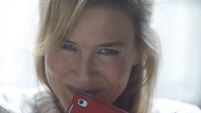Let’s dispense with hypocrisy over publication of Kate’s topless photos
First, a declaration of a potential conflict of interest: I have previously done freelance work for the Star and enjoyed my time in the news room, where I found the whole team to be professional, conscientious people.
Next, a question — do I have this straight? Richard Desmond, the media mogul who earlier this year told the Leveson inquiry that he wasn’t able to define ethics, has suddenly found his misplaced moral compass and is so horrified by the Star’s decision to publish pictures of a topless Kate Middleton that he immediately determined to divest himself of his interest in the paper? This, by the way, is the same demure guy who made his fortune peddling highbrow erudite fare like Asian Babes, The Very Best of Mega Boobs, and Spunk Loving Sluts and who currently owns TV channels such as Television X and Red Hot TV.













